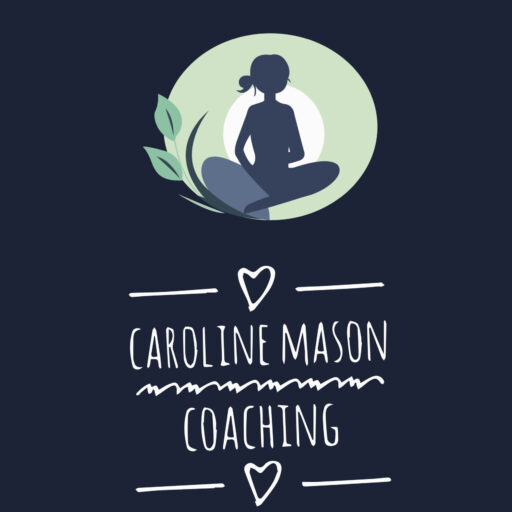As leaders, we often find ourselves caught in an impossible bind. We want to be compassionate, supportive, and available for our teams, yet we're drowning in demands, requests, and expectations that leave us depleted. The result? We feel guilty when we say no, guilty when we protect our time, and guilty when we prioritise our own wellbeing.
I've worked with countless leaders who struggle with this exact challenge. They worry that setting boundaries makes them seem selfish or uncaring. But here's what I've discovered through years of coaching and my own leadership journey: boundaries don't make you less compassionate, they make you more effective at showing up with genuine care.
The Hidden Cost of Boundary-Free Leadership
When we lead without boundaries, we think we're being generous and supportive. In reality, we're setting ourselves up for burnout and resentment. Many leaders I work with describe falling into an 'always on' pattern — keeping an open door at all hours, saying yes to every request, and rarely challenging the mounting demands on their time.
The result? Exhaustion creeps in, decision-making suffers, and ironically, teams can begin to lose respect because the leader seems scattered and reactive. A lack of boundaries doesn't help anyone; it actually diminishes your effectiveness as a leader.
This is the paradox many people-first leaders face: the very behaviours we think demonstrate care and dedication can actually undermine our ability to lead well.

Reframing Boundaries: From Selfish to Strategic
The first step in setting boundaries without guilt is shifting how we think about them. Boundaries aren't walls that keep people out, they're containers that help us show up more fully and intentionally.
When you set clear boundaries, you're actually demonstrating several key leadership qualities:
Clarity and decisiveness: You're showing your team what focused leadership looks like.
Self-respect: You're modelling healthy behaviour that your team can emulate.
Sustainability: You're protecting your energy so you can be present and engaged long-term.
Authenticity: You're being honest about your capacity rather than over-promising and under-delivering.
I've seen leaders transform their effectiveness simply by reframing boundaries from "letting people down" to "showing up more powerfully." When you protect your time and energy, you can bring your best self to the interactions and decisions that truly matter.
Three Essential Steps to Guilt-Free Boundary Setting
Step 1: Get Crystal Clear on Your Non-Negotiables
Before you can communicate boundaries effectively, you need to understand what they are. This requires honest self-reflection about your values, priorities, and limits.
Start by asking yourself:
- What behaviours, requests, or situations consistently drain my energy?
- What conditions do I need to do my best work?
- When am I most valuable to my team and organisation?
- What would I protect if I truly respected my own capacity?
Take time to write these down. Vague boundaries create confusion and make it harder to maintain them consistently. The clearer you are about your limits, the more confidently you can communicate them.
For example, instead of a vague sense that you're "too available," you might identify: "I need uninterrupted time from 8-10 AM for strategic thinking" or "I don't respond to non-urgent emails after 7 PM."
Step 2: Communicate Boundaries Proactively and Positively
The key to guilt-free boundaries is communication. When you're clear, respectful, and proactive about your limits, people are much more likely to understand and respect them.
Here's a framework that works:
Context: Briefly explain why the boundary serves the team or organisation.
Boundary: State your limit clearly and specifically.
Alternative: Offer a different way to meet their needs when possible.
For example: "To ensure I can give our morning strategy sessions my full attention [context], I don't take meetings or calls before 9 AM [boundary]. If something urgent comes up, please text me and I'll respond as soon as I'm available [alternative]."
This approach shows you're thinking strategically, not just protecting yourself. You're making it clear that your boundaries serve a larger purpose.
Step 3: Practice the 5-Second Reset
When someone pushes against your boundaries or makes a request that tests your limits, you don't have to respond immediately. I teach my clients a simple technique I call the "5-Second Reset":
- Drop your shoulders and take a deep breath
- Place your feet firmly on the ground
- Notice what you're feeling without judgement
- Ask yourself: "What do I need to feel centred right now?"
- Respond from that grounded place
This brief pause gives you space to respond thoughtfully rather than reactively. It helps you maintain your boundaries while staying calm and professional.

Handling the Guilt When It Arises
Even with the best intentions and clearest communication, you'll probably still feel guilt when you first start setting boundaries. This is normal, you're changing patterns that may have been in place for years.
When guilt shows up, try this:
- Acknowledge it: "I notice I'm feeling guilty about saying no to that request."
- Question it: "Is this guilt helping me or my team right now?"
- Reframe it: "By protecting my capacity, I'm ensuring I can show up fully for what matters most."
- Take action: Do something small that reinforces your boundary and demonstrates its value.
Remember, guilt is often just unfamiliarity in disguise. The more you practice healthy boundaries, the more natural they'll feel.
When Boundaries Feel Like Conflict
Some people may push back when you start setting clearer limits. This doesn't mean your boundaries are wrong, it often means they're necessary.
One experienced client, a team leader, was constantly interrupted throughout the day. When they started blocking time for focused work, one colleague complained that they were "becoming difficult to reach." My client felt tempted to abandon the boundary, but instead, they had a calm conversation explaining how the focused time improved their ability to support the team's bigger projects.
Within a month, not only had the colleague adapted, but other team members started implementing their own focus blocks. That boundary became a positive model for the whole team.
The Ripple Effect of Healthy Boundaries
When you set boundaries without guilt, you create permission for others to do the same. You model what sustainable leadership looks like, and you contribute to a culture where people can be honest about their capacity.
I've seen teams transform when leaders demonstrate that it's possible to be both caring and boundaried. People start having more honest conversations about workload, they become more strategic about priorities, and overall job satisfaction increases.
Your boundaries aren't just about you, they're about creating an environment where everyone can thrive.
Ready for real change?
Want to find out how I can support you as a human-centred leader—or help your team set boundaries that boost wellbeing and performance?
Book a free 15-minute discovery call and let's chat about what support looks like for you.
With light and warmth,



